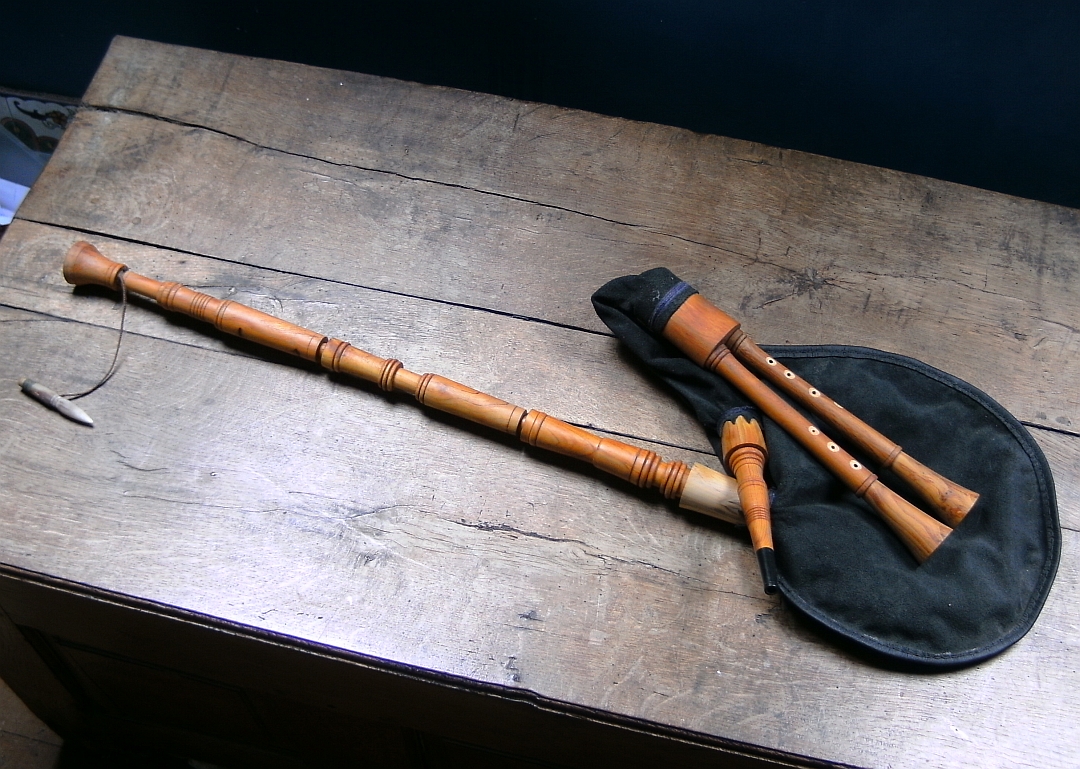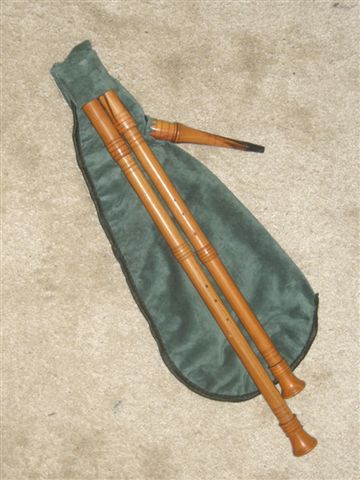The Bagpipe Society
Guide to the Guide to Double and Triple Pipes


In British churches there are many depictions of pipers playing bagpipes with two chanters, one for each hand. No instruments survive, but various makers have made working Double Bagpipes, including Julian Goodacre, John Tose and Jim Parr.
Each double pipe sounds very different: some use closed fingering and have cylindrically-bored chanters, others open fingering and conical bores. What unites them is that the two chanters allow the piper to play simple harmonies, or to play different rhythmic ’loops’ with each hand.
Julian Goodacre’s Cornish Double Bagpipes are inspired by a carving dated from the early 1500’s in Altarnun Church, Bodmin Moor, Cornwall. They have a deep and sonorous tone. The two chanters are fingered independently: one plays the upper half of the octave, the other the lower half. Both chanters can play the tonic note and thus, using covered fingering, one can create a constant drone whilst playing the melody. They are pitched in low D.
Julian also makes English Doublepipes based on measurements taken from the James Talbot manuscripts of the 1690s. A similar chanter appears in a German picture from 1636 and there is a detailed account of two sets being played in 1729 by James Bell of Carlisle.
These English Double Bagpipes have a single chanter that contains two bores. The finger holes are arranged so that one can produce simple harmonies and counter melodies. The pipes usually have a single drone. They are fairly quiet with a gorgeous tone.
Double bagpipes have a very long history and are still played in many countries, particularly north Africa and those bordering the Aegean Sea.
Nothing is known about the Early Medieval Triplepipe beyond its depiction in British carvings and manuscripts from the 8th- 13th centuries. Of the ten images that have been discovered five are from England.
Like the Pibcorn, this bagless bagpipe has two chanters and a long drone, all with single reeds and all of which are held in the mouth, played using circular breathing.
A similar instrument, the launeddas, can be dated back to prehistory and is still played in Sardinia. Barnaby Brown is responsible for reviving the triplepipe and has based his technique upon the Sardinian tradition. It appears that the triplepipe is the ancestor of all the pipes that are now played in Britain and it is wonderful to hear it being played still.
- Data Processing Notice (GDPR)
@BagpipeSociety on X (formally known as Twitter)
TheBagpipeSociety on Instagram
 BagpipeSociety on Facebook
BagpipeSociety on Facebook
Something wrong or missing from this page? Let us know!
